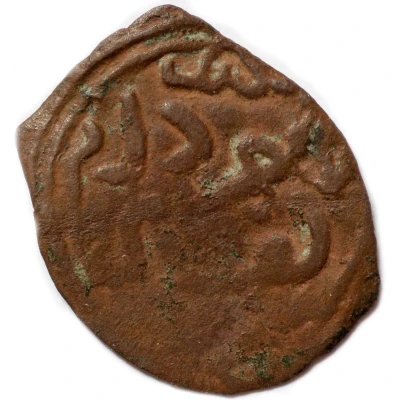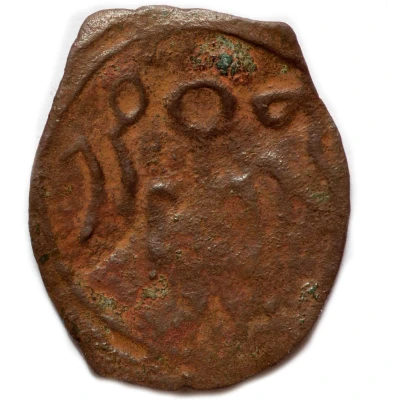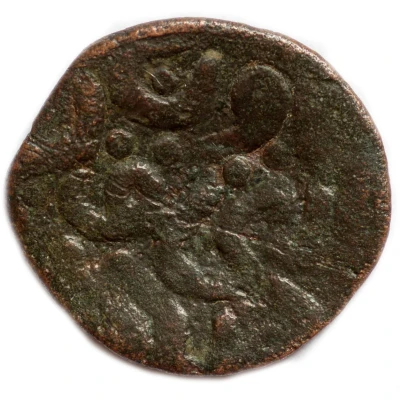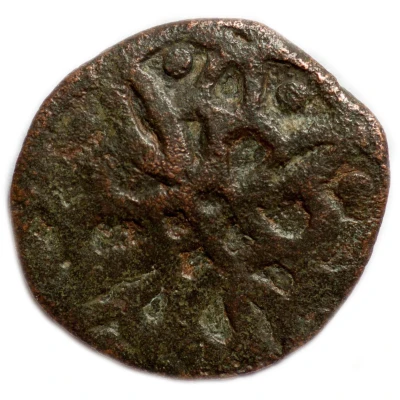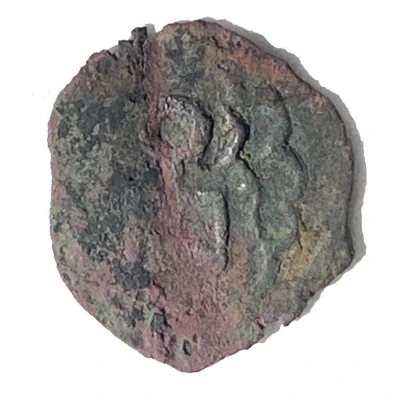
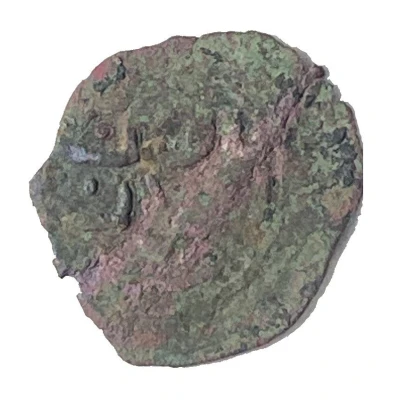

© IFS (CC BY-SA)
Pul - Anonymous - temp. before Muhammad Uzbeg Qrim ND
| Bronze | 2.20 g | 20 mm |
| Issuer | Golden Horde |
|---|---|
| Type | Standard circulation coin |
| Years | 1267-1313 |
| Value | 1 Pul (1⁄16) |
| Currency | Dinar (1227-1502) |
| Composition | Bronze |
| Weight | 2.20 g |
| Diameter | 20 mm |
| Thickness | 0.5 mm |
| Shape | Round (irregular) |
| Technique | Hammered |
| Demonetized | Yes |
| Updated | 2024-10-06 |
| Numista | N#314857 |
|---|---|
| Rarity index | 95% |
Reverse
Internally to two circles there is a legend
Translation: According to V.P. Lebedev: "Perhaps there is a well-known ratio of the value of silver and copper coins: "Kyr [k] segiz / bir ... = 48-one ..."
Edge
Plain, irregular
Comment
The initial name of the Crimean peninsula was Tavrika after its ancient inhabitants of Tauris. Mongols conquered the peninsula in 1239 and together with the Dnieper-Dniester have made it one of the 14 Ulus of the Golden Horde. Early Crimean (Qrim, or Kyrym) coins are not dated and are either with the names of the rulers of the Crimean ulus or generally anonymous.Tamgas (seal or stamp) coins of the Mongol Ulus (region) from the very beginning acquired a Muslin appearance. The inscriptions were written utilizing the Arabic alphabet, often placing the name of the Baghdad caliph, a pious Muslim saying (the Kalima), keeping the tradition of forbidding graven images. However, these coins were created with a specific quality, introduced by the Mongols, placing on the coins their own special mark: the tamga. 210 tamghas signs or images are well known for Mongols. By changing the tamga, the change of ruler is naturally shown.
The tamgas above appear straight through all the descendents of Batu. This, then, is what numismatic literature calls the chief tamga, by consensus calling it the tamga of the house of Batu. By such examples, on the coins of the Golden Horde at this time the personal name of a given ruler changes to the tamga, his tribal crest (house). In the end of the 13th century, in the Golden Horde, the mints divided into many autonomous units, and often produced anepigraphic coins, as if the compulsory placing of the tamga of the House of Batu was the unique witness to whom these coins from the mint of the Golden Horde belonged. For a long time already it has been noticed that the graphical representation of the main tamga was not always strictly of one type, but apparently drawn with more than 15 variants as in the picture above (V.P. Lebedev). Undoubtedly the overwhelming majority of these variations are conditioned by artistic expression, but some are careless engravings. In this way, different variations of the tamga are encountered on the coins of one and the same khan, and some of the coins of the same type are struck with different engravers.
After Uzbeg, the tamga of the House of Batu ceased to be placed on Golden Horde coins, just as the reform unifying monetary affairs began and ended with the accession of Janibeg (1341-1357), which excluded tamgas as a formal element of coin types. At this time with the death of Nawruz (1360) the line of Batu ended in general.
Reports for this coin range their weight from 1.30 to 2.20 grams, and diameters in the range from 19.4 to 23 mm
Above, a very well preserved example by https://www.zeno.ru/showphoto.php?photo=256460
Interesting fact
One interesting fact about this coin is that it was issued during the reign of Muhammad Uzbeg, who was the Khan of the Golden Horde from 1267 to 1313. He was known for his military campaigns and his efforts to convert his people to Islam. This coin, which is made of bronze and weighs 2.20 grams, may have been used in trade and commerce during his reign.
